Petrolicious, the creator of quality, original films and articles for classic car enthusiasts, has released its latest video, featuring Quentin LeBlond’s 1973 Alfa Romeo GTV 2000, designed by a young Giorgetto Giugiaro at Bertone.
Petrolicious celebrates the inventions, the personalities, and the aesthetics that ignite a collective lust for great automotive machines, and it seeks to inform, entertain, and inspire its community of aficionados and pique the interest of those who have been missing out.
Today, Petrolicious takes up the incredible story…
There are cars you drive, and cars that quietly work their way under your skin. Quentin LeBlond’s 1973 Alfa Romeo GTV 2000 Bertone belongs to the second group. It’s not loud about it. It doesn’t ask for attention. But every time he reaches for the key, every time he feels the way the shifter slides into gear, it whispers back that it’s still there. Still willing.
The GTV 2000 sits at the top of one of Alfa Romeo’s most iconic bloodlines. GTV stands for Gran Turismo Veloce (Fast Grand Touring) and the 2000 series, introduced in 1971, represented the final evolution of the classic 105/115 series coupes. Designed by a very young Giorgetto Giugiaro during his time at Bertone, it became one of his formative masterpieces.


Before Giugiaro became synonymous with the sharp-edged, angular wedge designs of the late 1970s and 80s, the DeLorean, the Lotus Esprit, the VW Golf, he created this: a perfectly balanced, delicate shape that feels timeless even decades later. The signature Alfa heart grille flanked by quad headlights, the delicate Hofmeister kink, the short rear deck, all of it perfectly weighted. It’s easy to see why this car helped shape the trajectory of Giugiaro’s career and why Bertone, as a design house, remains stamped on so many iconic machines.
But great design only takes you so far. What makes the GTV unforgettable isn’t just how it looks, but how it moves. The 2.0-liter twin-cam four was good for 132 horsepower, but it was never about the number. It was about the feel. Light on its feet. Eager. Responsive in a way modern cars can’t imitate. It earned its place not through speed, but through character.
Quentin’s been circling this world since he was a kid. Rallies, shows, long weekends spent chasing sheet metal through winding roads. At some point, watching wasn’t enough. He left a conventional career and built Mechanicüs, a dealership meant to strip away the greasy handshakes and fogged-up promises that sometimes sour the classic car world. Here, every car is vetted by feel. Driven. Understood. The goal isn’t to move metal. It’s to keep the obsession alive long enough to hand it off to his kids.
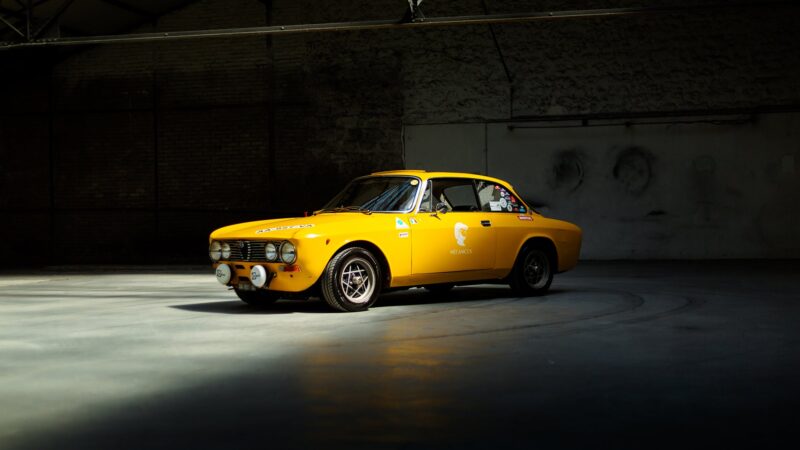
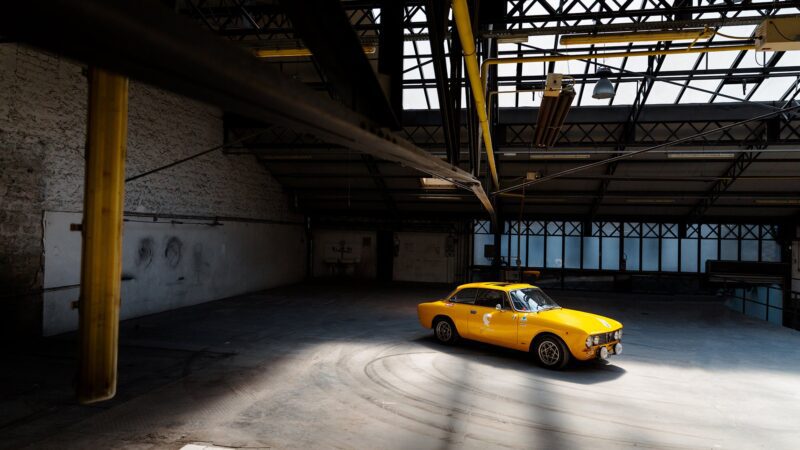

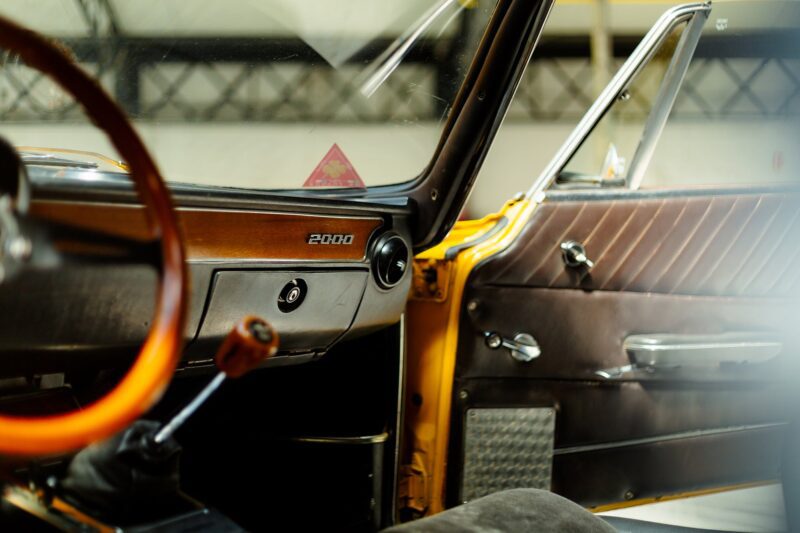
The Alfa isn’t just a backdrop to Quentin’s story, it’s a centerpiece. The car where all of this folds back into itself. Quentin knows every inch of this thing. He knows how to feather second before first to save the synchros. “I know that if I don’t want first gear to crack, I have to go second-first. And reverse? Fifth before reverse, always,” he explains, half-smiling. He knows the spot under the hood where time and a lazy respray still betray the car’s original red paint. He knows the smell of the cabin on a humid morning. The sound of the starter catching. The way the gearbox complains briefly, then falls into rhythm. It’s not the kind of knowledge you learn from a manual. It’s earned through years of repetition. The intimacy of imperfection.
And yet, even with that familiarity, the car still manages to catch him off guard. A random glance in a shop window reflection. The way the fenders bend light just so. “Every time I see it in a mirror, or just walk past it, I rediscover it. The shape, the look, the color — there’s still a connection I can’t really explain,” he admits.
The Alfa has, for the most part, never let him down. Except for one story. They were on their way to Le Mans Classic when his wife, absentmindedly fiddling with the ancient cigarette lighter, managed to short the electrical system. A small fire. A close call. Quentin had to leave the car parked just short of their destination. But he doesn’t hold it against the Alfa. Not really. He talks about it like you talk about an old friend who once got you into a little bit of trouble. The kind that makes the friendship stronger.
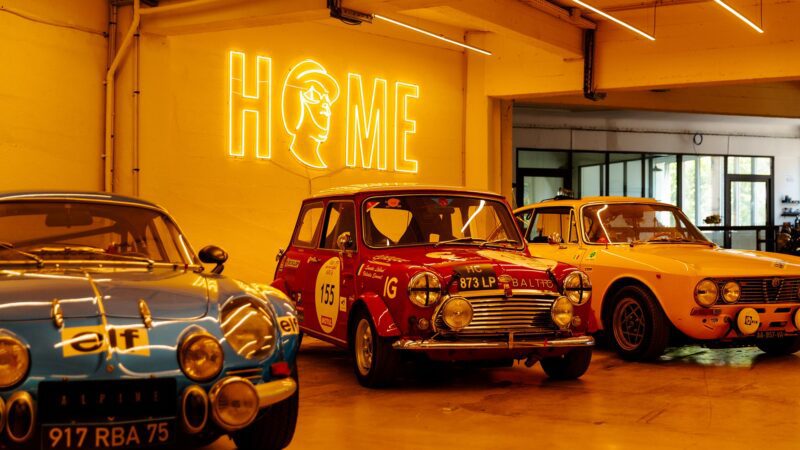
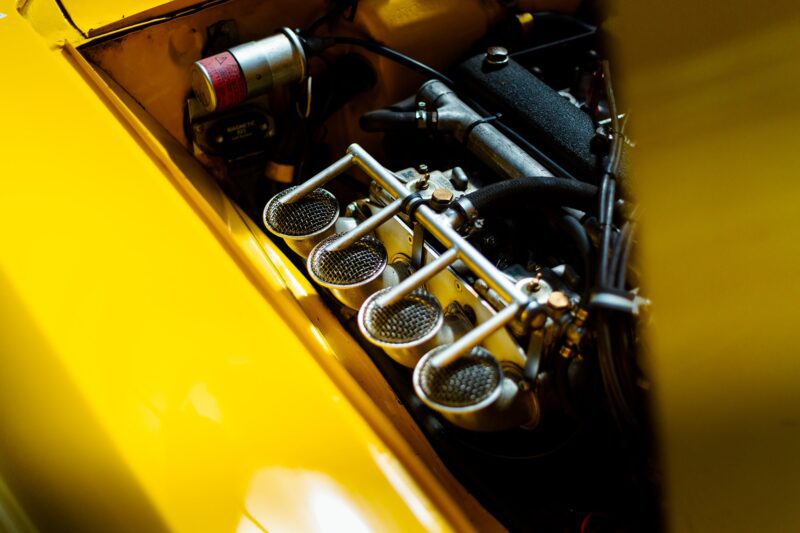
And now, it’s no longer just his. On weekends, he brings the kids out to the garage. They don’t drive it. They start it. They know the sequence. The little rituals. Quentin won’t share exactly what the starting procedure is, it seems like it’s something private, passed down to his kids but not to you. That silence says something. “Not many four and six-year-olds know how to start a 1973 Alfa Romeo. I’m pretty proud of that,” he says.
His six-year-old and four-year-old could probably start the car better than most adults at this point. And maybe that’s what sticks with you the longest. The idea that some things, when they become part of your routine, when you live with them long enough, develop a strange kind of loyalty. Like a dog that waits at the door. Like a battered tool that still cuts straight.
It’s easy to dismiss an old Alfa Romeo as a finicky thing, as unreliable. But this one, in its own stubborn, mechanical way, never walked away when it mattered. And that’s the part you end up passing down. Not just the machine. The constancy. The odd, esoteric comfort of something that refuses to quit on you.
Quentin puts it simply: “It’s part of the family now. I trust it. It trusts me. That’s all I need.”

